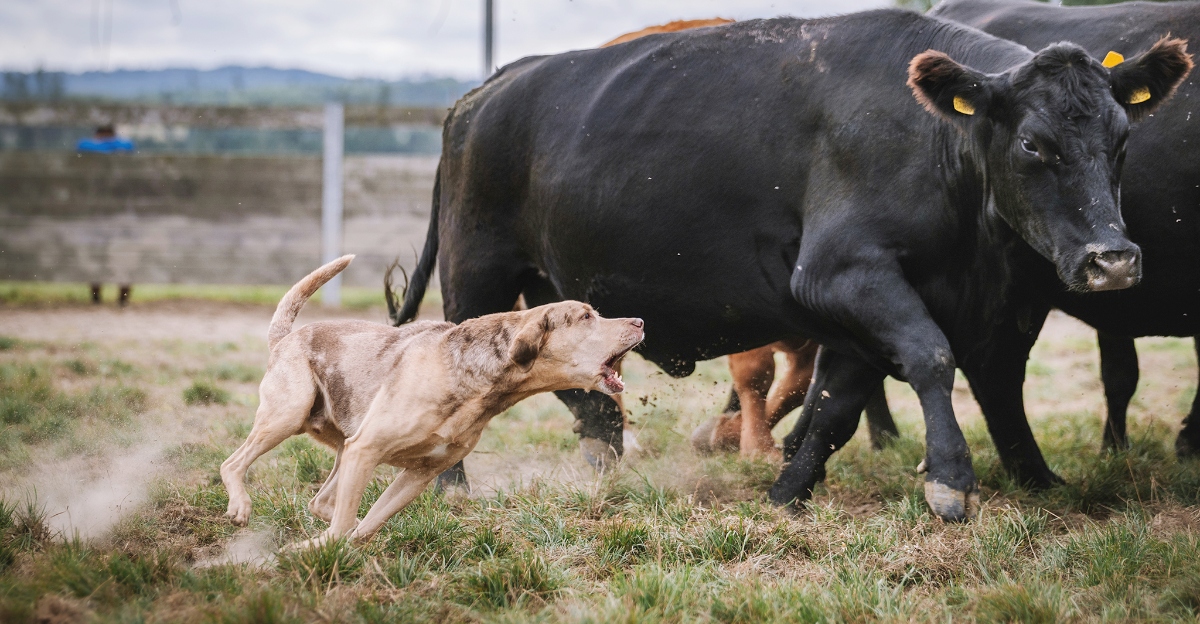
When people picture the American frontier, cowboys, cattle drives, and wide-open landscapes often come to mind. But woven into this iconic story are the now-extinct dogs that played essential roles in daily frontier life.
These animals weren’t mere pets—they were guardians, herders, hunters, and even sources of materials vital to survival and ceremony. Their disappearance erased more than bloodlines; it marked the loss of lifeways that defined early American settlements. Some breeds drove livestock across unforgiving terrain, while others stood as the first line of defense against wild predators.
Others still had roles in spiritual and economic life. Exploring these lost dogs of the West not only adds depth to frontier history but also reminds us of the indispensable, and often overlooked, animal companions of that era.
1. Salish Wool Dog
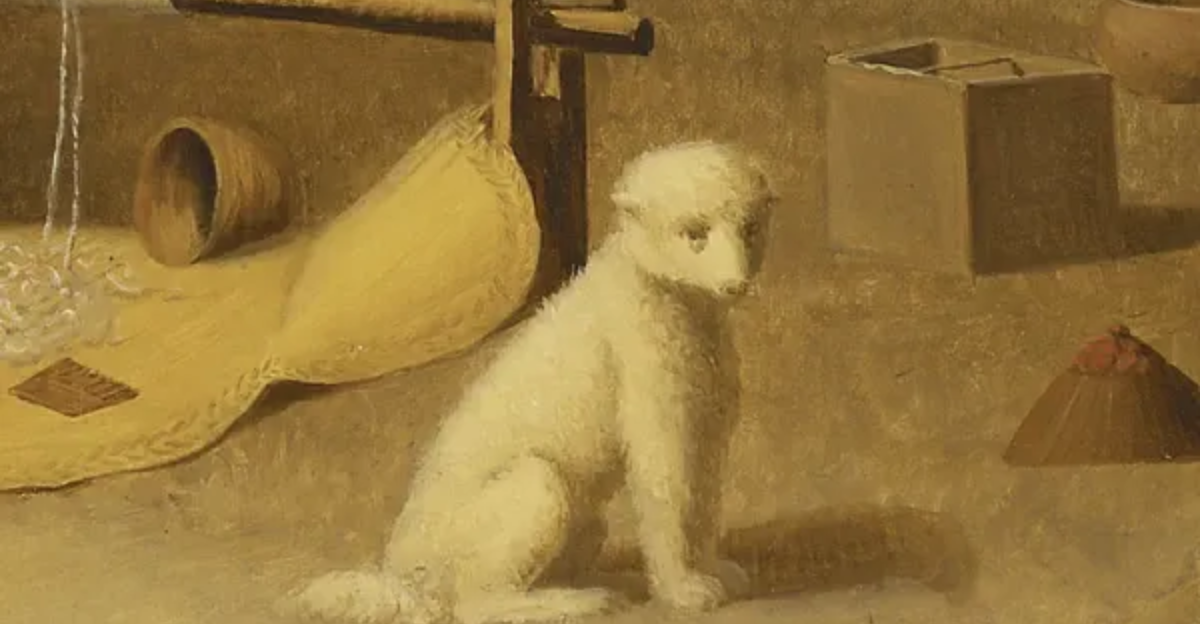
Long before sheep ever grazed the American West, the Coast Salish people bred the Salish Wool Dog—a small, white spitz-type valued not for herding but for its fleece. These dogs were carefully isolated on islands to maintain genetic purity, and their wool, sheared annually, was used in weaving blankets and ceremonial garments.
Fed a diet rich in salmon, the breed was among the few animals in North America specifically cultivated for its coat. Their extinction by the early 20th century came with colonization and the decline of Indigenous weaving traditions.
This dog’s unique purpose disrupts the common image of frontier dogs as only herders or hunters and reminds us that textile economies, too, had four-legged workers helping sustain them.
2. Cur Dogs

Curs weren’t defined by bloodline but by what they could do—and on the frontier, that meant just about everything. Originally developed in the American South, cur dogs quickly spread westward, becoming the go-to breed for herding cattle, guarding property, and hunting.
They were smart, resilient, and resourceful—traits far more valuable to ranchers than any pedigree. Curs were especially known for their ability to “bay up” cattle, cornering them without causing harm.
Despite their lack of official breed recognition, these dogs were often seen as the only ones tough enough to handle the rigors of Western life. Their story highlights how unglamorous, mixed-breed dogs helped forge the backbone of ranching success in the American West.
3. The Hare Indian Dog
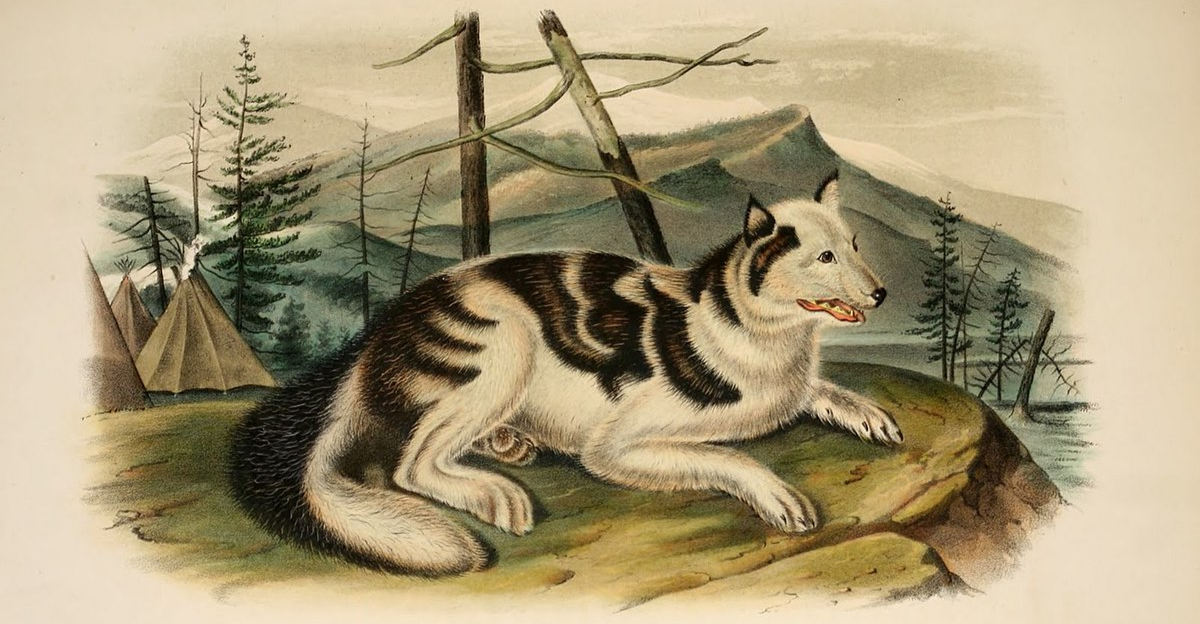
Among the most mysterious lost breeds of North America, the Hare Indian Dog was a silent stalker bred by the Hare people of Canada’s northern territories. Described as slender, fox-like, and fast, these dogs didn’t bark. Instead, they communicated with eerie howls and hunted by silently coursing prey across open ground.
Their physical traits—bushy tails curling over the hip, pointed ears, and sleek frames—suggested a link to coyotes or perhaps hybrid ancestry. Whether true dogs, coydogs, or domesticated coyotes, they were perfectly adapted to their environment.
As European settlers introduced new breeds and traditional hunting declined, the Hare Indian Dog faded from use and memory. Today, scientists still study their DNA, hoping to solve the puzzle of their ghostly legacy in America’s canine history.
4. Pre-Contact Native Dogs
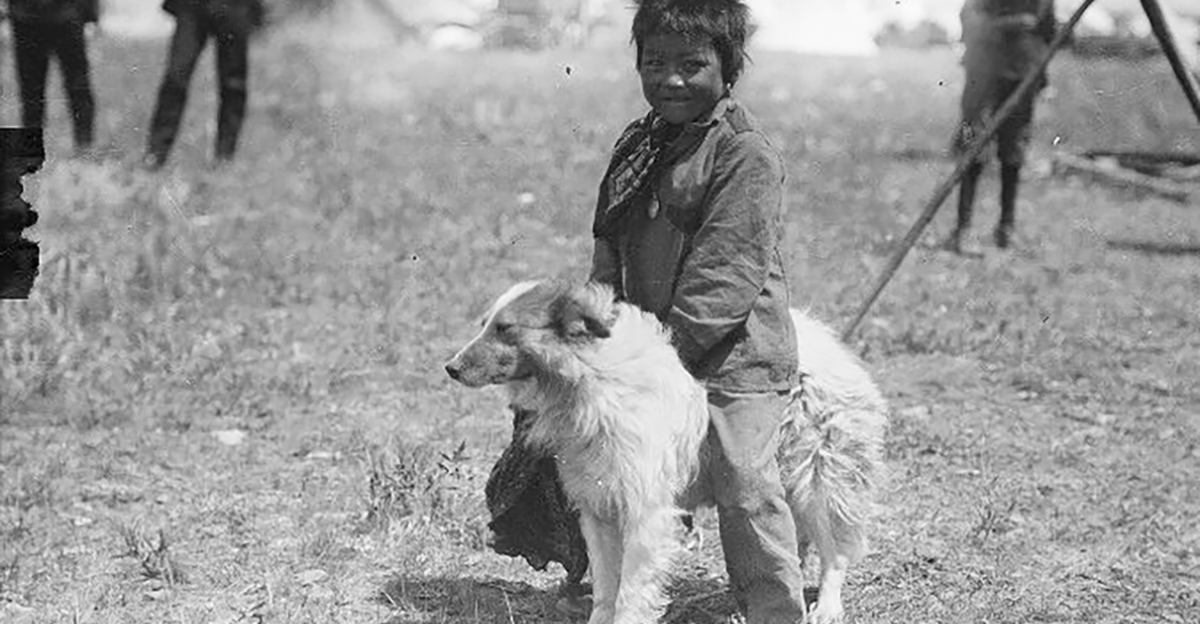
Long before Europeans set foot on North America, dogs arrived with migrating peoples from Siberia, forming a now-extinct lineage known as pre-contact dogs. These canines were deeply integrated into Native societies, where they served as hunters, protectors, and even spiritual figures.
Genetic studies show that their closest modern relative isn’t another breed—but a transmissible cancer that began in one of these ancient animals. With colonization came European dogs, which nearly wiped out this ancient canine population.
This loss mirrors the broader erasure of Indigenous cultures and biodiversity. Understanding these vanished lineages reminds us that the frontier’s dog history doesn’t begin with settlers—it stretches back thousands of years before.
5. Tahltan Bear Dog
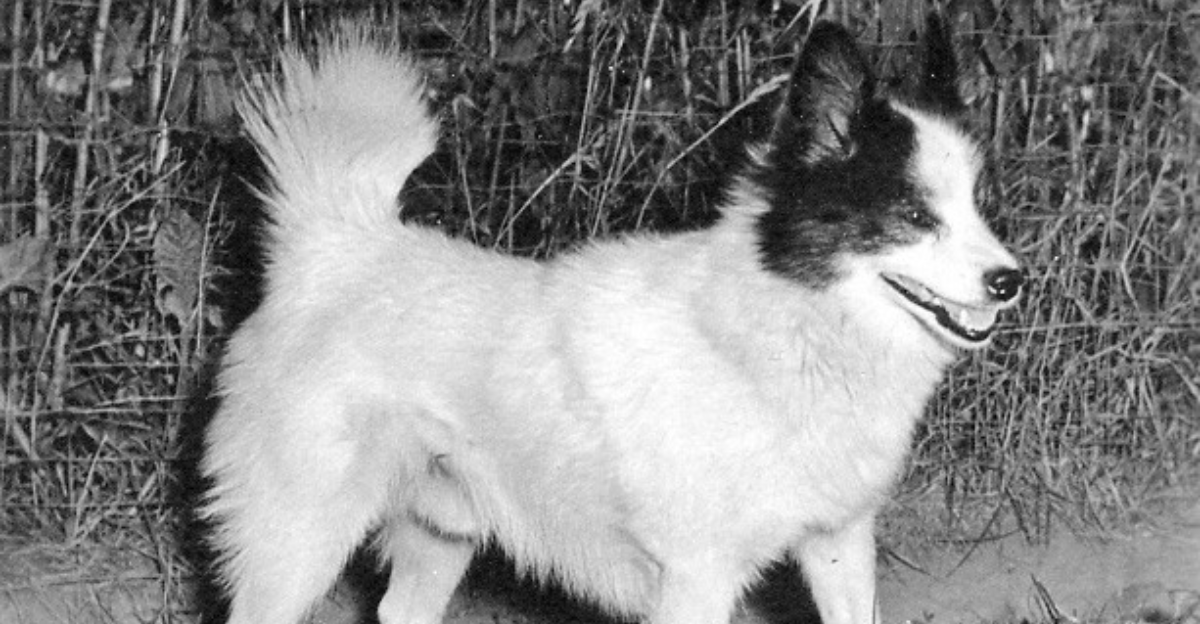
In the remote wilds of British Columbia, Indigenous hunters relied on a surprisingly small yet fearless companion: the Tahltan Bear Dog. Standing only 12–18 inches tall (30–46 cm) and weighing 10–18 pounds (4.5–8.2 kg), this spirited breed hunted animals far larger than itself—bears, mountain lions, even elk.
Carried in pouches, these dogs were released once prey was located, sprinting into dense underbrush and climbing trees to flush out quarry. Some accounts even claim they harassed bears from tree branches until the bear fell or fled.
Their compact size let them go where larger dogs couldn’t. Despite their prowess, they vanished by the early 1900s as traditional hunting declined and European breeds replaced them. Today, they survive only in oral histories and folklore.
6. Pueblo Indian Dog—The Underwater Tracker
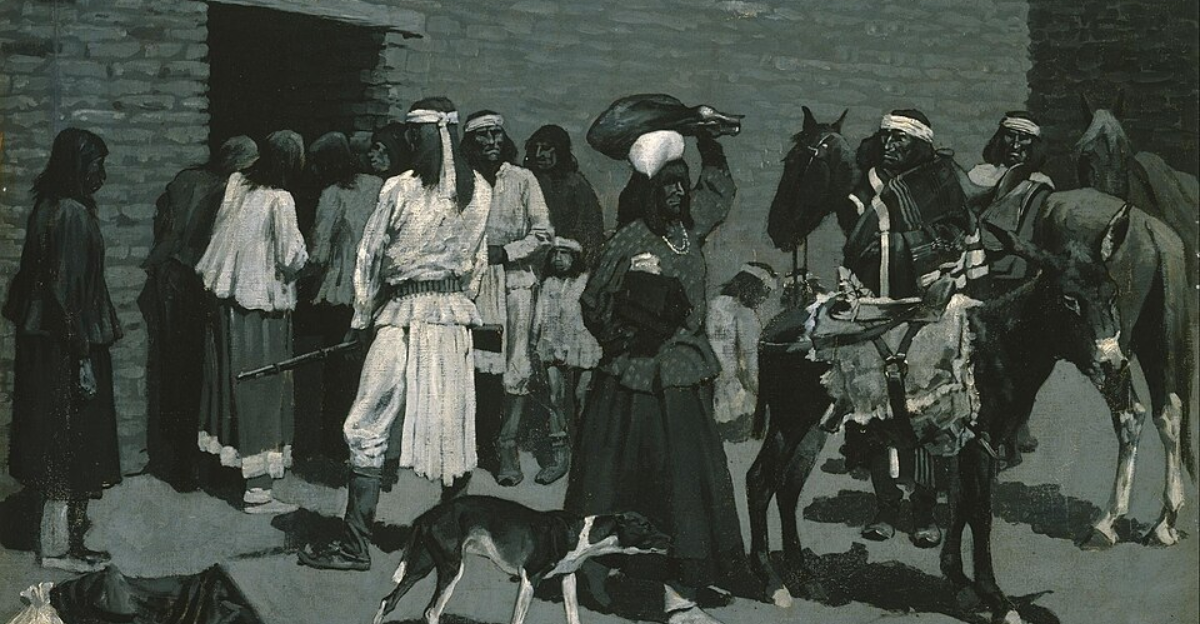
Few dogs in history were as versatile as the Pueblo Indian Dog. Indigenous to the American Southwest, this breed could track prey across desert, woodland—and water. Compact and agile, they used both scent and sight to hunt, climbed trees like coonhounds, and most amazingly, chased fish underwater.
Historical accounts describe them “barking underwater” to alert hunters to their quarry, a claim repeated in multiple oral traditions. Pueblo hunters carried these dogs on their backs, deploying them only when other tracking dogs signaled the right area.
Their ability to shift seamlessly between dry land and water made them invaluable for survival in such a diverse environment. While no confirmed remains exist in museums, archaeological traces suggest they were once widespread across Pueblo territories.
7. Techichi—The Silent Spirit Guide
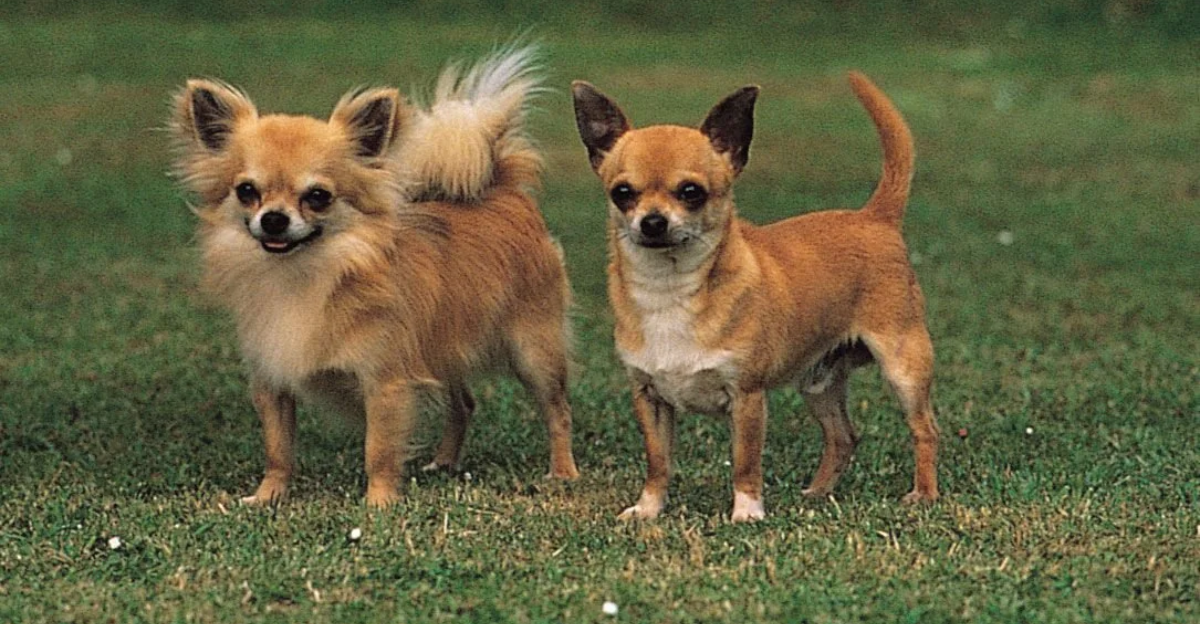
The Techichi was more than just a companion—it was a sacred link to the afterlife. Bred by the Toltec people and later embraced by the Aztecs, this small, silent dog held deep spiritual significance.
Mute and gentle, Techichis were believed to guide the souls of the dead through the underworld, often buried alongside their owners to fulfill this duty. They were also thought to absorb illnesses and negative energies. Techichis lived throughout Mesoamerica and even reached the American Southwest before European colonization. Sadly, the breed was wiped out after the Spanish conquest.
However, their legacy lives on—the modern Chihuahua is believed to descend directly from the Techichi, carrying echoes of an ancient dog once revered as a spiritual guide.
Colonial Erasure—How Native Dogs Disappeared

When European colonists arrived, they brought more than new customs—they brought the end of North America’s ancient dog breeds. Diseases decimated native canine populations just as they did Indigenous people.
But cultural destruction was just as damaging. Colonial officials often banned traditional dogs outright. Among the Coast Salish, wool dogs owned by high-status women were deliberately targeted—seen as symbols of cultural identity, they were forbidden by Indian agents. One elder recalled her great-grandmother being forced to kill her dogs.
Settlers also feared the wolf-like look of native breeds and culled them intentionally. The result was near-total erasure. Modern DNA studies show almost no trace of these pre-contact dogs in today’s canine population. Their genetic signature was effectively erased from history.
What Lost Frontier Dogs Teach Us About the West
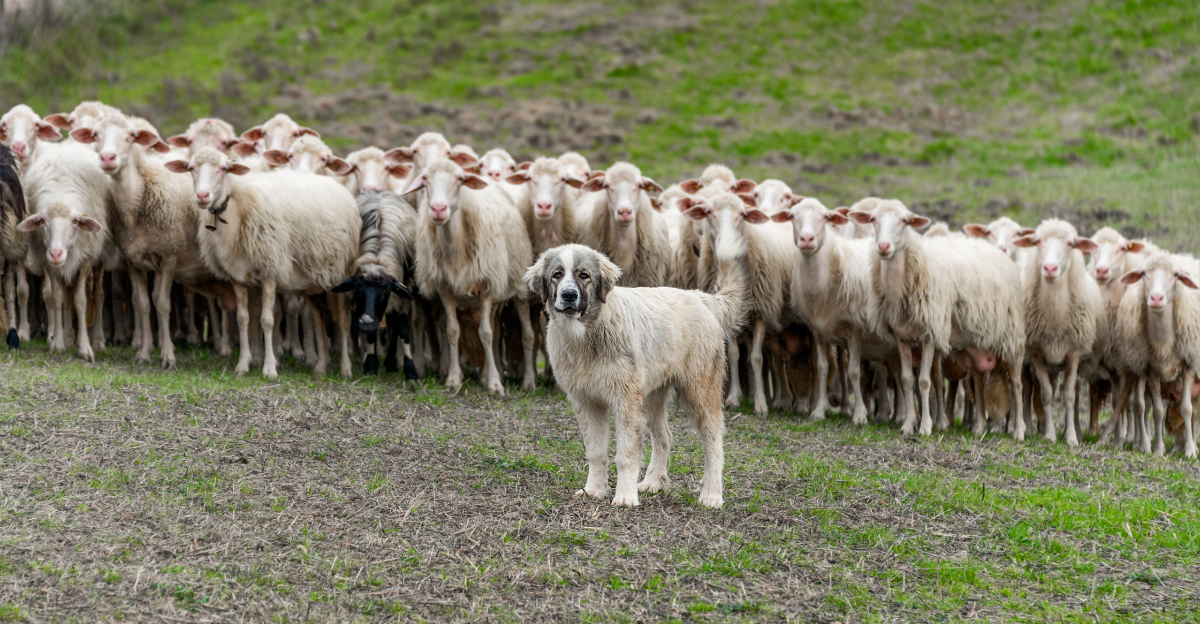
These lost breeds show us that the American West wasn’t just built by horses, wagons, and humans—it was also shaped by dogs whose contributions have faded from view. From wool-producing companions to fearless predator chasers and all-around cattle wranglers, these animals were integral to survival and success.
Their extinction marks more than biological loss—it reflects the cultural changes brought by colonization, industrialization, and modernity. Each breed offers a glimpse into the lives of people who depended on animal partners for work, protection, and community.
Honoring their memory deepens our understanding of the West and highlights the lasting bond between humans and the dogs who stood beside them.
Explore more of our trending stories and hit Follow to keep them coming to your feed!

Don’t miss out on more stories like this! Hit the Follow button at the top of this article to stay updated with the latest news. Share your thoughts in the comments—we’d love to hear from you!







